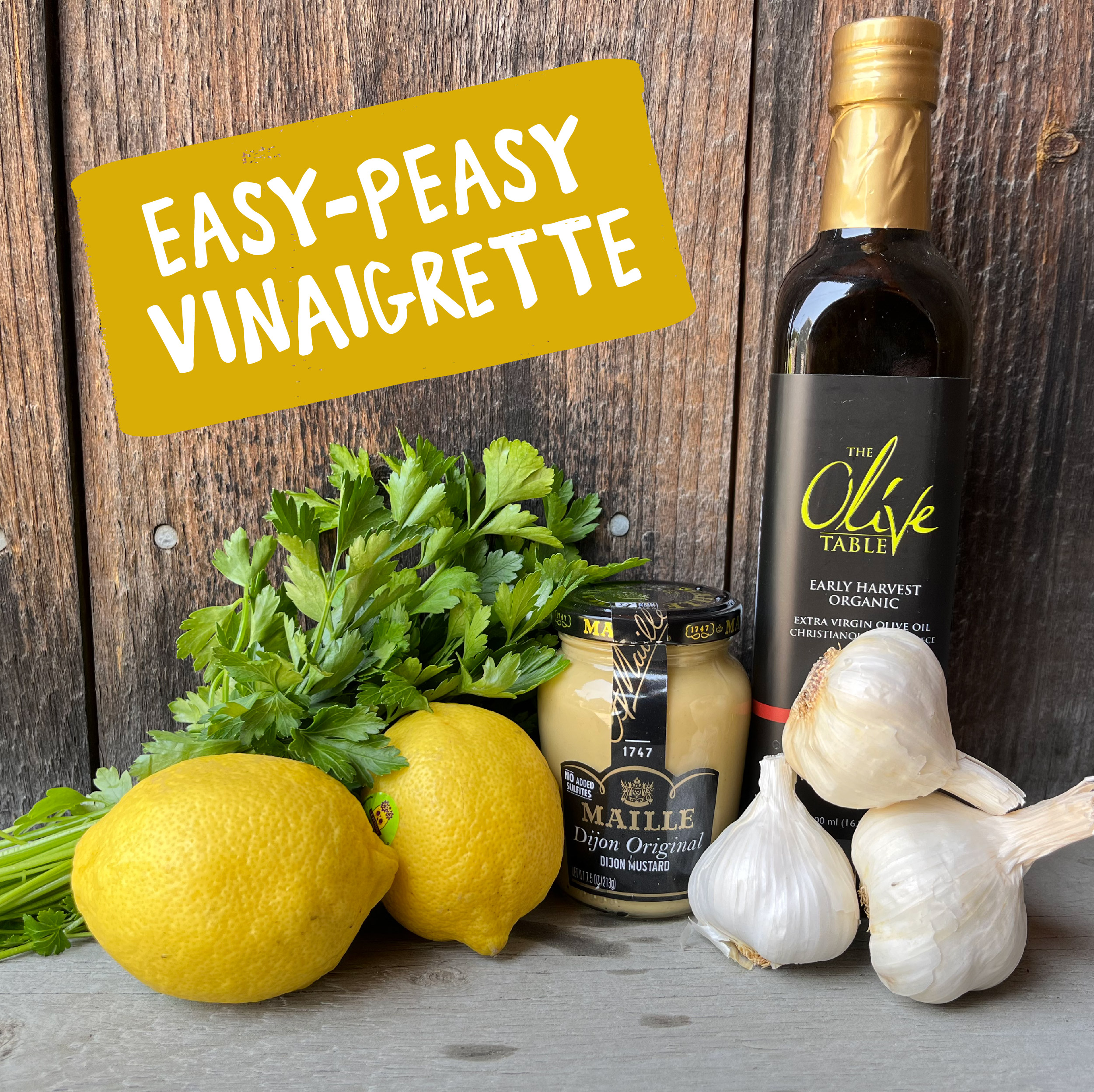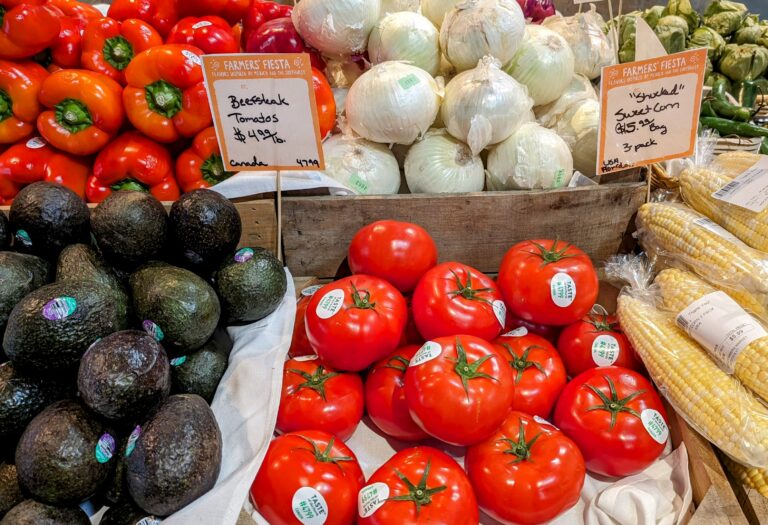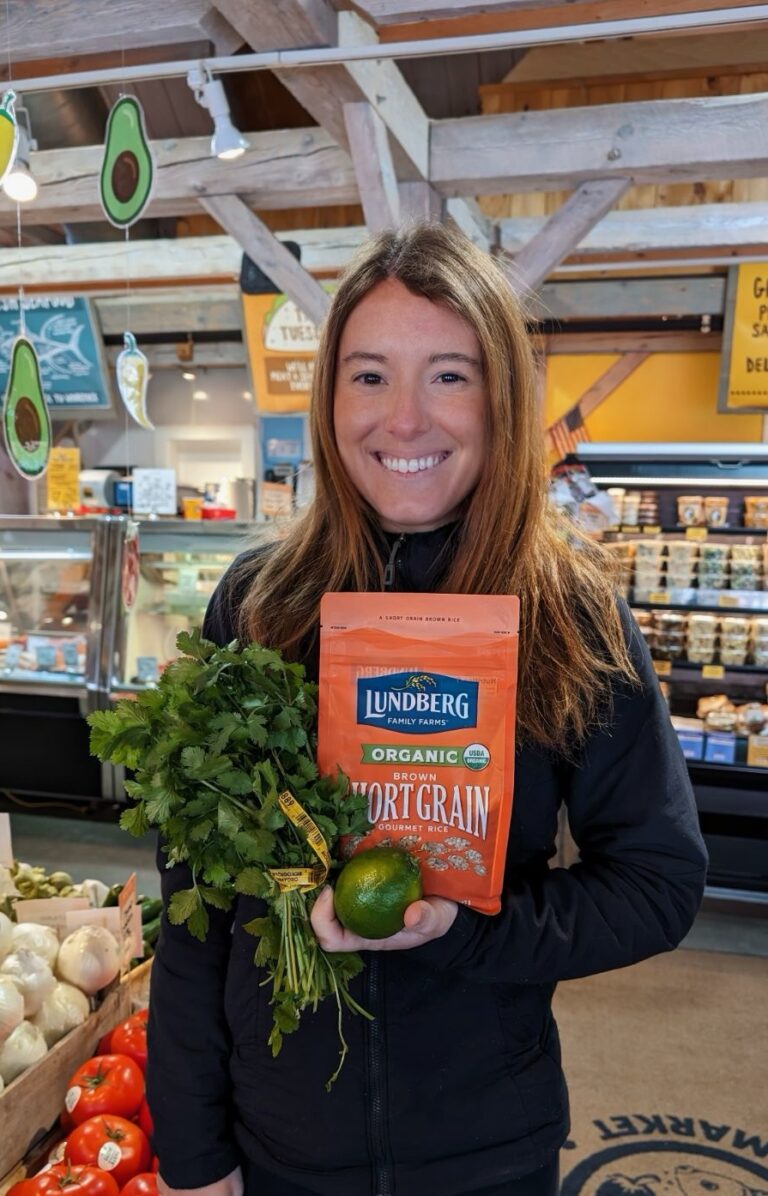Salad is, hands down, my favorite food group. While the definition of “salad” varies—I looked it up just now, and the consensus is a mixture of different foods, usually served cold but sometimes not; usually including vegetables, but sometimes not; usually savory, but sometimes not; and served with dressing or mayonnaise. Or Cool Whip. I use the term “consensus” lightly—in my world it’s delicious stuff in a big bowl with a tart and garlicky dressing.
About once every couple of weeks, I look in my vegetable drawer in the fridge and pull out everything sad, as well as other interesting salad candidates. Tired peppers, zucchini, eggplant, scallions, onions, and always radicchio, get trimmed and dressed with olive oil, salt and pepper, and charred on the grill. Then I chop them up and put them in a bowl with lettuce or arugula, cooked potatoes and green beans, tomatoes, leftover cooked broccoli, whatever needs using up.
Often I will grill crusty bread for croutons, and toss in some canned chickpeas, tuna or leftover chicken to make it more meal-like and substantial. It makes for great lunches the next day.
What makes it come together, however, is the dressing. Salad dressing is very easy to make, and totally worth the effort. You can use all sorts of acidic ingredients as a base, but my first choice is usually lemon juice, preferably fresh-squeezed from tired lemons. Yes! Tired lemons! They are softer and juicer than their fresh, firm counterparts. But if you only have the hard kind, you can cut them in half, brush the cut side with olive oil, and grill them face-down for a few minutes until they char and soften. Or microwave them.
I have a couple of vintage juicers that are amazing—a cast aluminum Rival Juice-O-Mat that has awesome crushing power, and my grandmother’s old electric juicer with a porcelain reamer that extracts every last bit of liquid from a citrus shell leaving an empty rind behind. Regardless of how you get the juice, you’re looking for about ¼ to 1/3 cup, to which you can add 2 grated or minced garlic cloves and a teaspoon of salt, plus freshly ground black pepper, and a teaspoon of Dijon mustard. If you are me, you will also add 3-4 great quality anchovies (Fishwife or Ortiz) and blitz it in a mini chopper or food processor. When the salt is dissolved, whisk or blend in ½ to 2/3 cup of oil, then taste to see if you need more lemon.
This dressing is very versatile, and keeps well in a jar in the fridge, although the olive oil will congeal when it gets cold. Add a little grapeseed or organic Canola oil to make it less likely to do so, or just give it a good shake in the jar and leave it at room temperature for a few minutes before using it.
There are plenty of variations, too: use wine vinegar (red or white) in place of the lemon; add chopped herbs; add some nut oil (walnut is great on salad); use lime juice, chili powder and cilantro instead of the lemon for a great Southwestern bean salad dressing; use a combination of balsamic vinegar and red wine vinegar for something a little sweeter; you get the idea. Play around with ratios to suit your taste and create your “signature” vinaigrette. Keep it on hand, and your salad practically makes itself.
~Amelia


